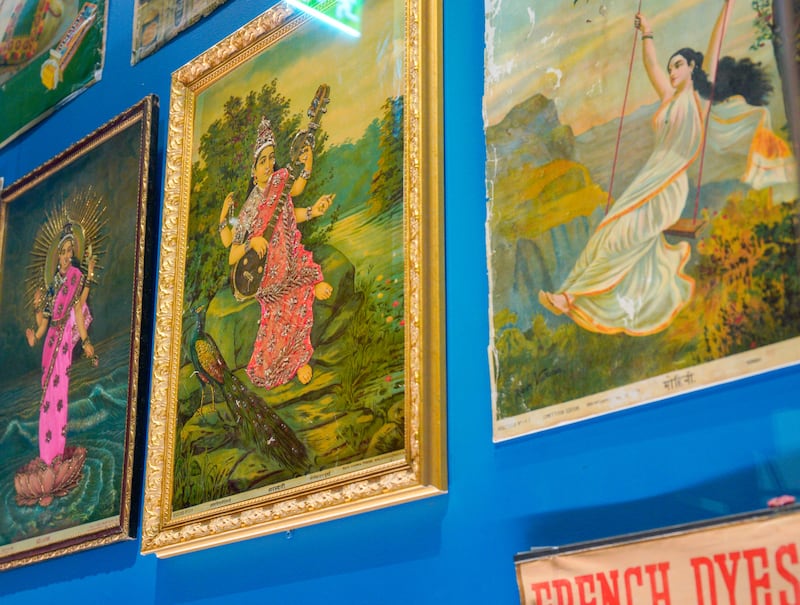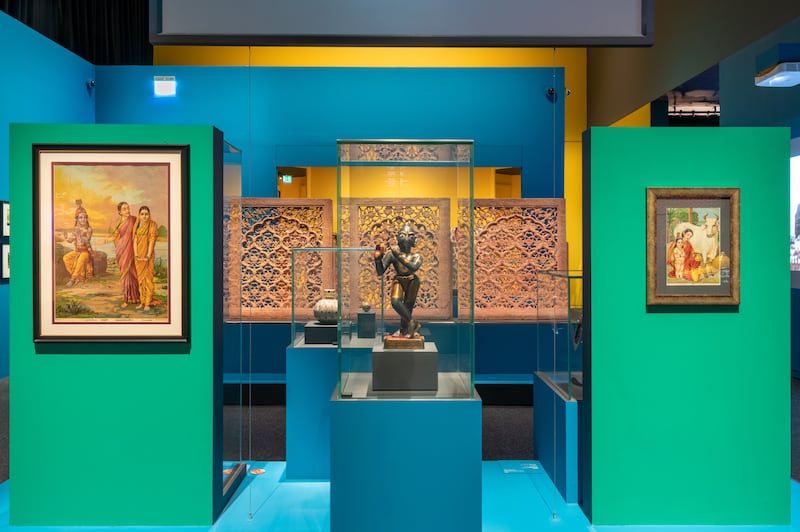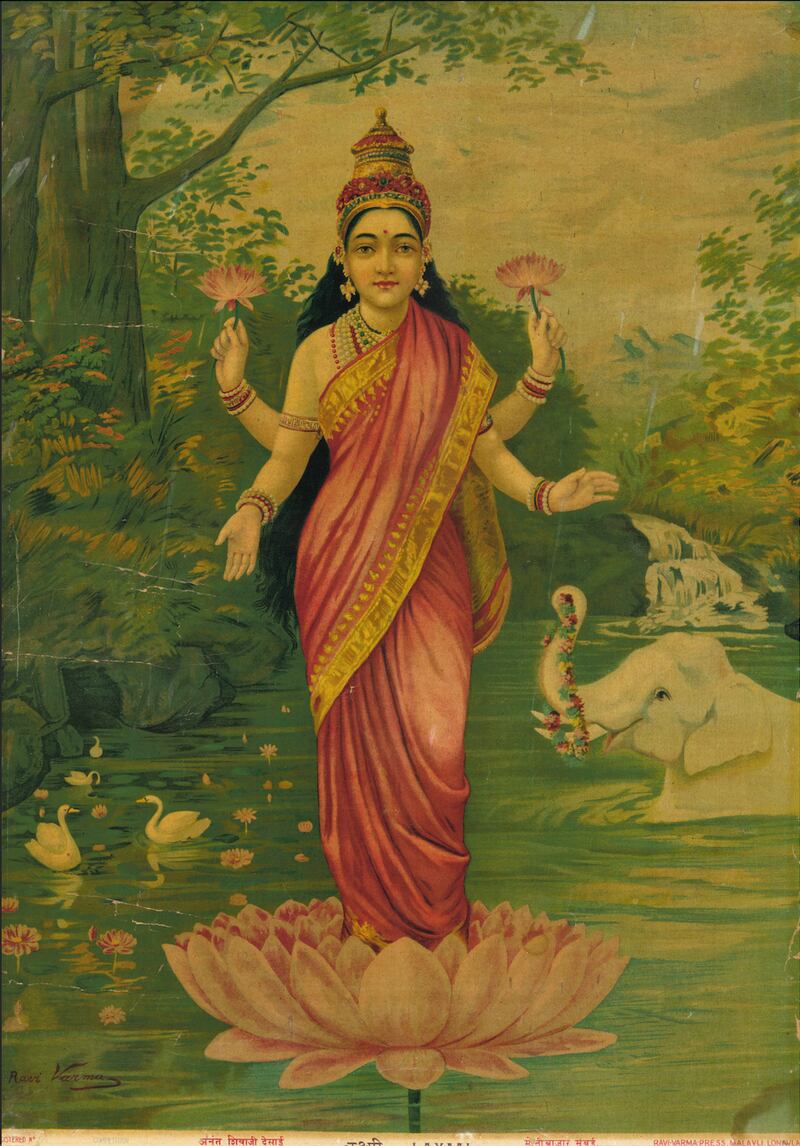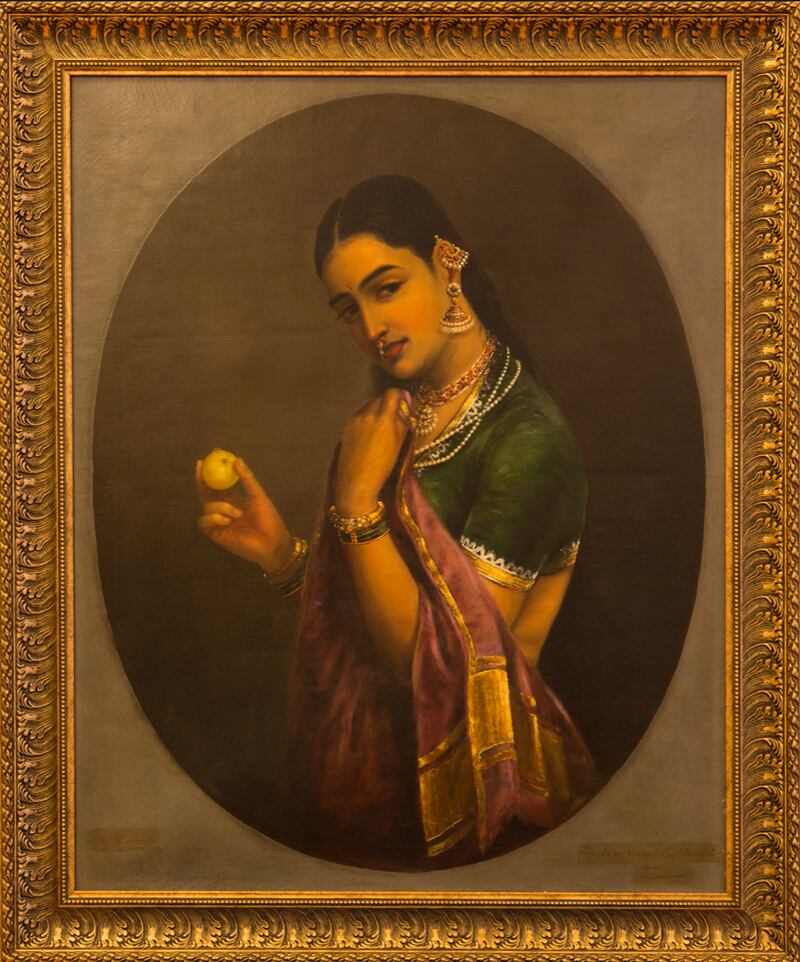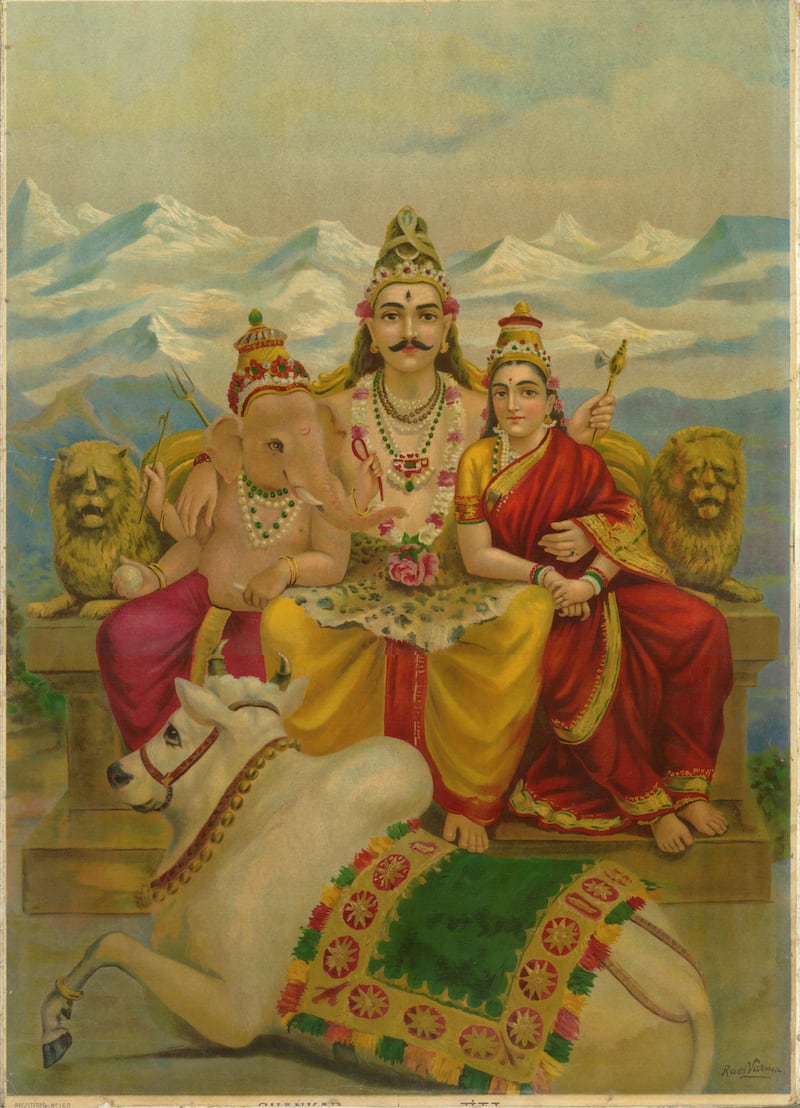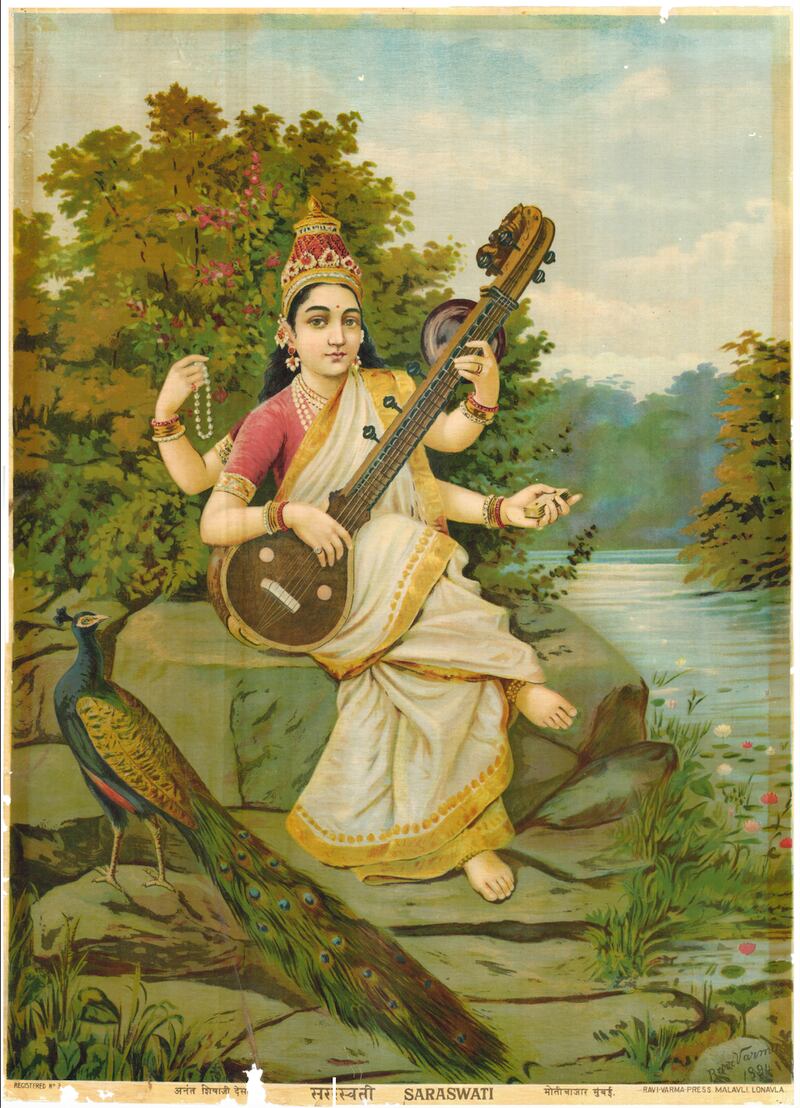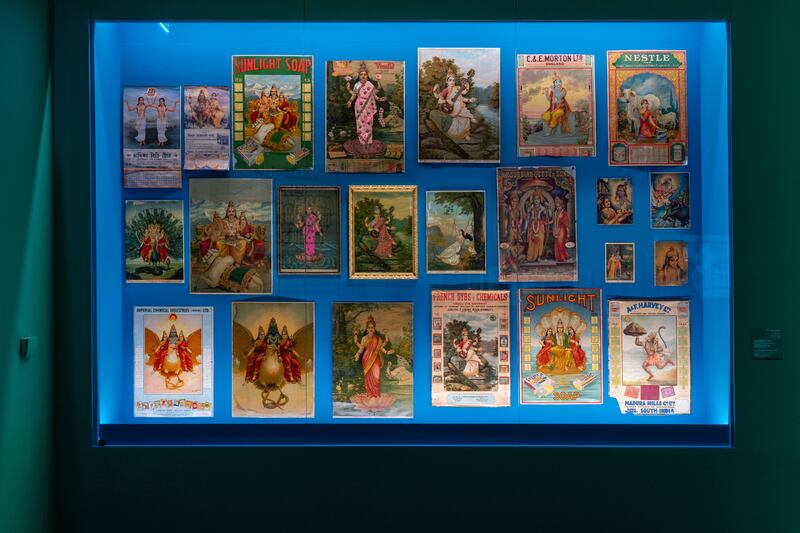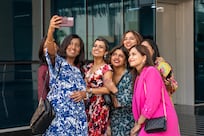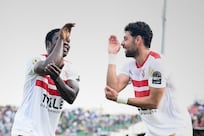The Bollywood Superstars: A Short Story of Indian Cinema exhibition, running at Louvre Abu Dhabi until June 4, features nine lithographs from a vast collection of paintings by the famed Indian painter Raja Ravi Varma.
The chromolithographs were loaned to the museum by the Raja Ravi Varma Heritage Foundation in Bangalore, in the run-up to the 175th anniversary of the Indian master's birth, falling on April 29. Digital images of two original oil paintings belonging to important private collectors from India also feature in the exhibition's catalogue.
Varma was the first Indian artist to use western techniques and styles to depict uniquely Indian themes. While his depictions of royal portraiture and everyday scenes were popular, his work in providing faces to gods and goddesses captured the imagination of the masses. The artist is credited with painting close to 2,000 works in a career spanning almost four decades.
Born on April 29, 1848, in a small village called Kilimanoor in Kerala, his family was related to the royal family of Travancore. Even as a little boy, he used to draw pictures on the walls of his house. In her book Raja Ravi Varma: Painter of Colonial India, art curator and author Rupika Chawla writes that Varma’s uncle was impressed with the young boy’s talent and taught him everything he knew about art.
When Varma was 14, his uncle took him to the palace at Thiruvananthapuram so that he could learn from the royal painter. This opportunity enabled the budding artist to study European and Indian paintings in the palace. He also had a chance to observe court artists at work and read books on art provided to him by the maharajah.
His work soon started garnering attention. In 1873, he won the Governor’s Gold Medal at the Madras Fine Arts Society Exhibition for the painting Nair Lady Adorning Her Hair. In 1904, Varma was awarded the Kaiser-i-Hind gold medal by the British Viceroy of India.
Often referred to as the father of modern Indian art, Varma has contributed hugely to the history of his time through his works. “His style, themes, technique and work have deeply influenced and shaped the Indian aesthetic sense,” says Gitanjali Maini, managing trustee and chief executive of the Raja Ravi Varma Heritage Foundation.
Varma's works have not just popularised Indian iconography and popular historical stories, but actually shaped the nation and created an artistic legacy for India. He used textures, light and shadow to add depth to his paintings. His attention to detail in the clothing, jewellery, furniture, background etc also added a layered dimension to his artworks.
The ordinary and the commonplace proved to be an inspiration to the artist as much as the mythological depictions he was most associated with.
In 1894, Varma set up a printing press in Mumbai to mass-produce copies of his paintings. This endeavour of making affordable lithographs took his depictions and gods and goddesses beyond expensive canvases to a multitude of working-class homes.
Maini says: “These prints depicting sacred and social themes had found a resonance with Indians by providing them a religious and nationalistic identity, so desired under alien rule.” But the printing of lithographs also drew criticism and dismissal as "calendar art," notwithstanding the enormous recognition by the masses who would otherwise not have had access to them.
It was at this printing press that the lives of Dadasaheb Phalke, considered the father of Indian cinema, and Varma intersected. Shreekumar Varma, the painter's great-great-grandson, says: “The young Phalke was his assistant and was influenced by his paintings. This can be seen in the movies made by him.”
In Phalke’s Raja Harishchandra (1913), the first full-length feature film to be made in India, his portrayal of mythical characters, influenced by Varma’s work, resonated with audiences immediately.
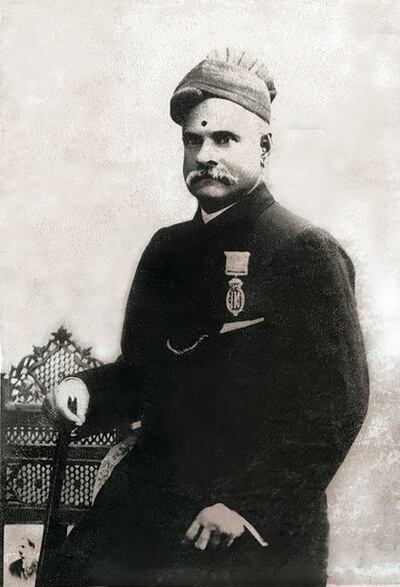
Maini says: “Phalke’s mythological films introduced entertainment as a unique element. Spectators were mesmerised by the extraordinary special effects; images that were no longer stationary and which accompanied a familiar mythological story, all made through a wholly unexpected medium.”
According to Maini, the lithographs loaned to the museum were chosen to align with the curatorial theme of the exhibition. She says: “Some of Phalke’s early films were based on Lord Krishna’s life and to support the cinematic imagery, chromolithographs on Krishna and his life stories was chosen. All the nine lithographs shared have some relevance or the other to popular imagery.”
The most popular lithographs, including those of goddesses Lakshmi and Saraswati, Vishnu Garuda Vahan and Shankar, were shared. They allow art lovers to ponder over the artistic vision of the gifted painter, depicted through realistic and stylistic techniques and portraying mythological landscapes and the culture of India in breathtaking ways.
The impact created by Varma’s imagery, which was initiated by Phalke, gained momentum over the decades, through cinema. Such has been the power and the impact of Varma’s work — images that have remained in the public subconscious, giving way to newer and more technologically advanced forms of expression.
Bollywood Superstars: A Short Story of Indian Cinema is on view at Louvre Abu Dhabi until June 4
